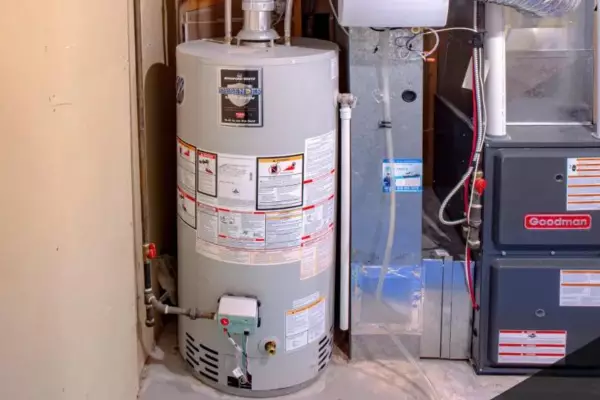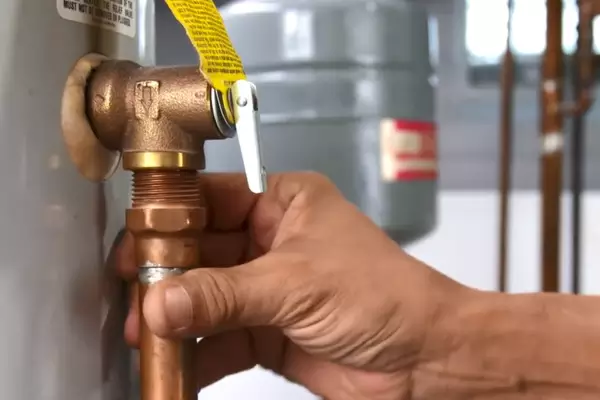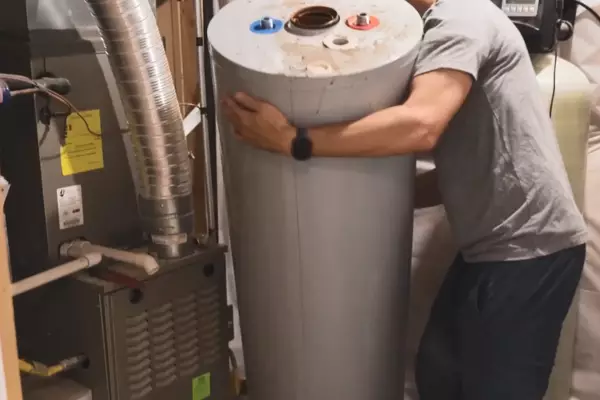The act of moving water heaters may seem like a mundane task, yet it is embedded with intricate details that if overlooked, can lead to potential damage or malfunction. This complexity arises due to the unique designs, structures, and working principles of different types of water heaters. For instance, electric, gas, and specific brands like Rheem each have their unique considerations during transportation.
The logistics involved in transporting water heaters often raise questions regarding the correct position during the move. Is it safe to transport these heaters on their side? This question is especially relevant to those with different types of heaters such as electric, gas, and even electric hot water heaters.
Such concerns highlight the need for accurate and comprehensive information on how to properly transport water heaters. This information becomes particularly crucial when dealing with expensive and high-quality brands like Rheem, where improper handling can lead to costly damage and potential safety risks.
Contents
Types of Water Heaters
Exploring the types of water heaters is the first step towards understanding their unique characteristics that influence the approach to transportation. Each type’s design and operational dynamics significantly impact how they should be handled, especially during transportation.

Electric Water Heaters
Electric water heaters have become a common choice in many households due to their energy efficiency and the simplicity of their design. They primarily operate by converting electric energy into heat through resistance. This heat is then transferred to the water inside the tank, ready for use.
However, their design comes with peculiarities. An electric water heater contains delicate components such as heating elements and thermostats. These parts can be adversely affected by abrupt movements or shocks, thus warranting careful handling during transportation.
Gas Water Heaters
Gas water heaters, as the name suggests, utilize propane or natural gas as their primary energy source. These heaters are more complex in their design and operation compared to electric heaters. They consist of components such as a gas burner and a heat exchanger. This complexity necessitates special considerations when transporting them to prevent potential damage or gas leaks.
Rheem Water Heaters
Rheem, an established and reputable brand in the water heater industry, offers both electric and gas heaters. These heaters are known for their durability and efficiency, a testament to their high-quality design and construction.
Transporting Rheem water heaters, thus, demands particular care. Any damage incurred during transportation can compromise their efficiency, leading to suboptimal performance or necessitating costly repairs.
Water Heater Transportation
When it comes to transporting water heaters, some common misconceptions often lead to improper handling, potentially causing damage. Shedding light on these can help prevent unnecessary damage and ensure the safe relocation of your water heater.
The Position Dilemma
A prevalent misunderstanding is that it’s fine to transport all water heaters on their side. While it may seem a convenient way to fit the heater into a vehicle, this method can subject the heater’s components to mechanical stress. This stress is especially detrimental to gas heaters that contain delicate components such as gas burners and heat exchangers.

One Size Fits All?
Another common misconception is that all types of water heaters can be transported in the same way. However, this is not accurate. Different types of heaters have different structural designs and operational dynamics, which require unique transportation procedures.
For instance, the delicate heating elements in an electric heater may be dislocated if laid on the side, and a gas heater’s burner and heat exchanger can be damaged if not transported upright. Thus, understanding the individual characteristics of each type of heater is essential for safe transportation.
Can You Transport an Electric Water Heater on Its Side?
Electric water heaters, while simpler in design compared to their gas counterparts, still demand care during transportation. One common question that arises is whether they can be tipped on their side.
Digging into the Design
Electric water heaters feature an insulated tank, a heating element, and a thermostat. When laid on their side, the insulation within the tank could shift, or the heating elements could be dislocated, potentially affecting their functionality.
Handling Tips for Side Transportation
If it is necessary to transport an electric heater on its side, it should be done with caution. The heater should be securely fastened and adequately cushioned to minimize vibrations and shocks. Moreover, the heater should be allowed to stand upright for several hours before being installed to allow the internal components to settle back into place.
Can You Transport an Electric Hot Water Heater on Its Side?
Electric hot water heaters, while sharing many similarities with regular electric heaters, have to contend with much higher temperature ranges. This distinction necessitates specific guidelines during transportation.
Identifying the Key Differences
While electric hot water heaters operate on the same basic principle as regular electric heaters, they handle higher heat levels. This increased heat handling capacity introduces elements in their design that could be compromised if the unit is laid on its side during transportation.
Transportation Rules of Thumb
Similar to regular electric heaters, it is preferable to transport these heaters in an upright position. If unavoidable circumstances necessitate side transportation, the heaters should be securely fastened and adequately cushioned to prevent movement that could damage the internal components.
Can You Transport a Gas Water Heater on Its Side?
Gas water heaters require particular attention during transportation due to their complexity and the inherent risks associated with their use. One common concern is whether these heaters can be transported on their side.
Safety First for Gas Heaters
Gas water heaters contain components such as a burner and a heat exchanger. These elements are not only delicate but also crucial for the safe operation of the heater. Tipping these heaters over can lead to potential damage or misalignment of these components, leading to gas leaks or fire hazards. Therefore, gas heaters should always be transported in an upright position.

Steps for Secure Transportation
Before transportation, disconnect the gas supply, and drain the water from the heater. Once ready for transport, the heater should be secured in an upright position and cushioned to prevent any movement during the journey.
Transport Rheem Water Heater on Side
Given their high-quality construction and efficiency, Rheem water heaters demand extra care during transportation. Whether it’s an electric or gas heater, improper handling can lead to performance issues or damage to the unit.
Unique Aspects of Rheem Heaters
Rheem heaters, whether electric or gas, are designed with high-grade materials that ensure their durability. Any damage from improper handling can potentially hamper their efficiency.
Advice for Rheem Water Heater Transport
When moving a Rheem heater, maintain its upright position, and ensure it’s well-secured. This will safeguard the heater’s structural components and ensure its optimal performance post-transport.
Final Tips for Water Heater Transportation
Once you’ve established the correct position for transporting your water heater, there are additional precautions you can take to ensure its safe arrival.
Pre-Transportation Checklist
Before you start your journey, it’s essential to prepare your water heater for the move.
- Disconnecting and Draining Steps: Always disconnect the power source (electricity or gas) and drain the water tank. This makes the heater lighter and easier to handle.
- Essential Packing Materials: Use protective materials like bubble wrap and moving blankets to shield your heater from potential shocks or scratches.
Safeguarding Your Heater During Transport
While on the move, you can take several measures to ensure your water heater’s safety.
- Secure Positioning and Fastening: Make sure the heater is tightly fastened and positioned upright (especially for gas heaters) to avoid unnecessary movement.
- Monitoring for Damage En Route: Regularly check for any visible signs of damage or leaks during the journey.
Post-Transportation Procedures
Upon arrival at your destination, it’s important to follow certain procedures to ensure your water heater is in good working order.
- Initial Inspection Post Transport: Conduct a thorough inspection for any visible signs of damage or leaks.
- Installation and Testing: Once you’ve reconnected the power source and filled the tank, test your heater to ensure it’s functioning correctly.
Frequently Asked Questions
Can I transport my electric water heater on its side?
While it is not recommended, if unavoidable, an electric water heater can be transported on its side. However, you should ensure it’s securely fastened and cushioned to minimize potential damage.
What is the safest way to transport a gas water heater?
The safest way to transport a gas water heater is in an upright position. This reduces the risk of damaging the burner or heat exchanger and prevents potential gas leaks.
